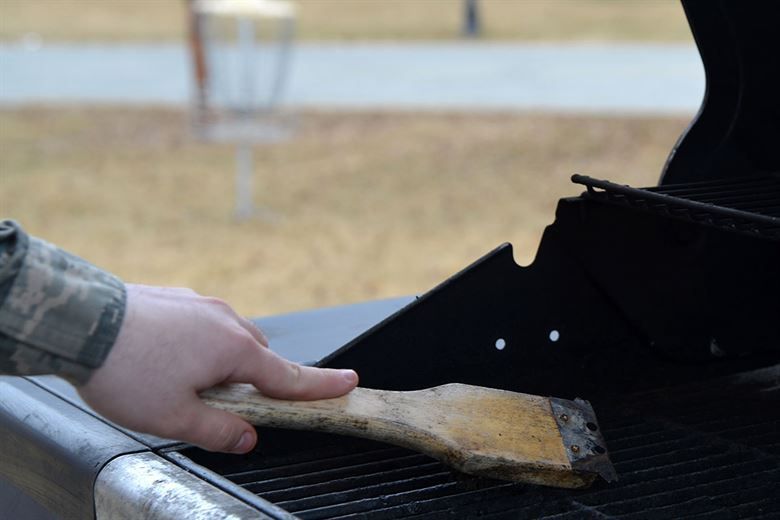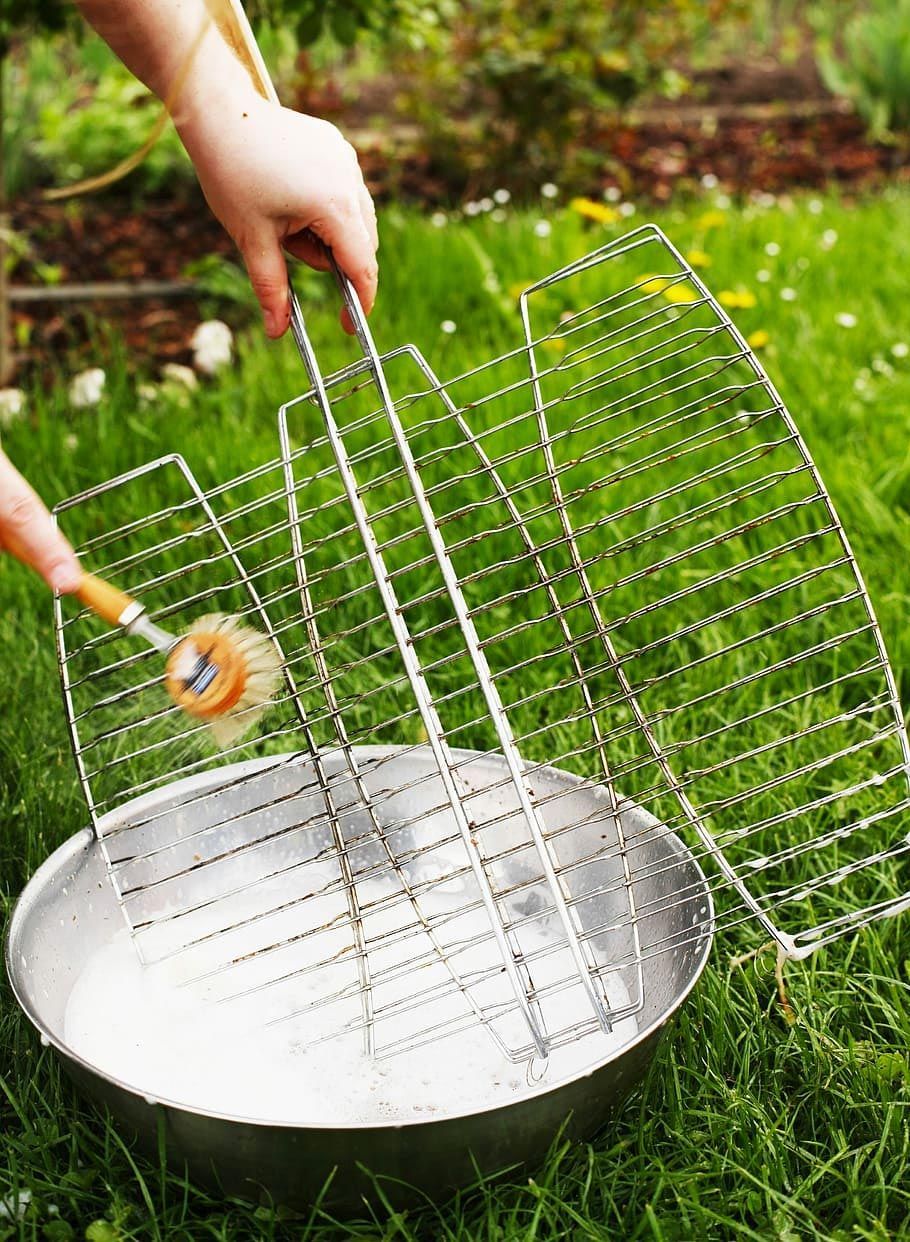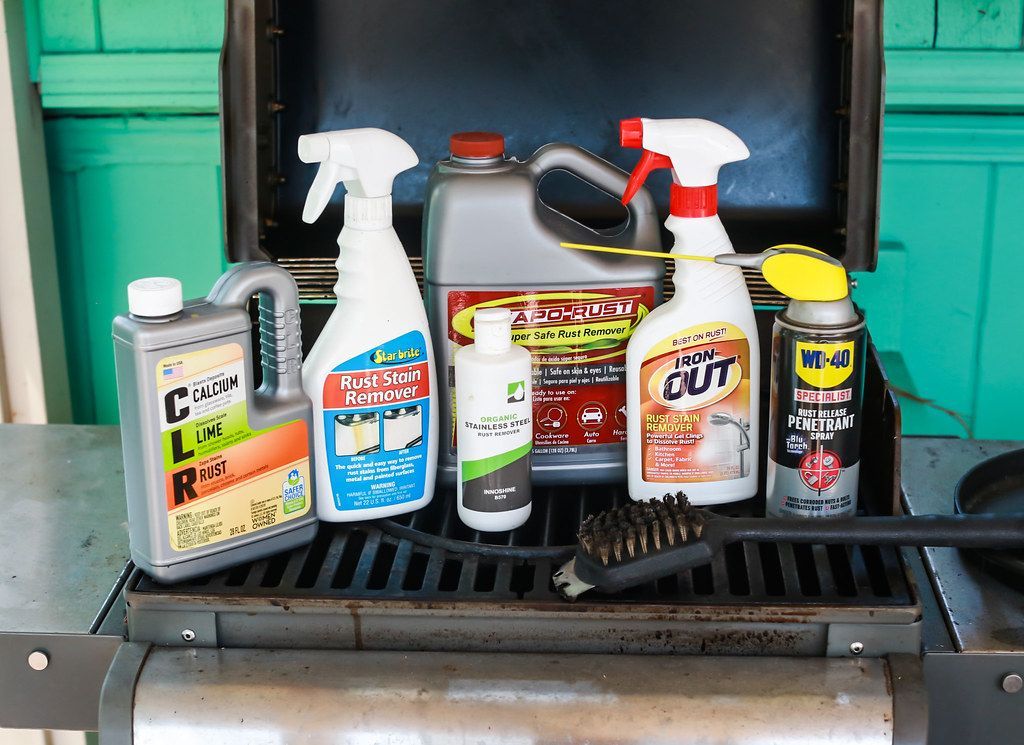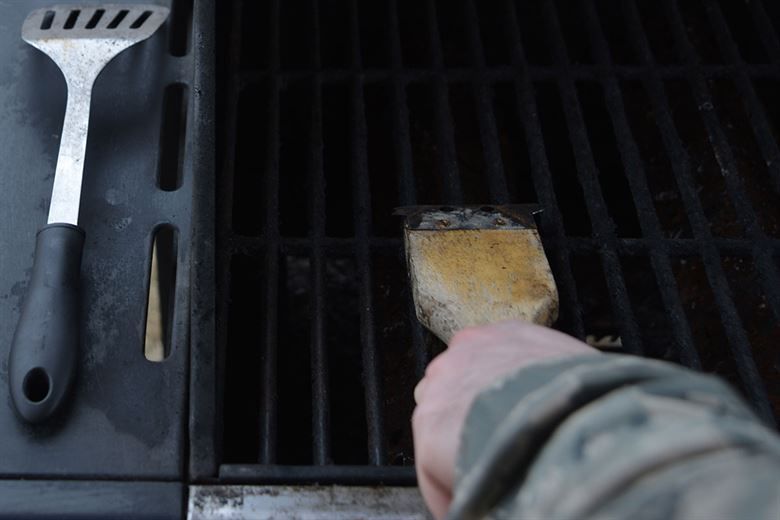Our recommendations are made independently. We may receive commissions from purchases made via our links.
How to Clean Grill Grates: Instructions to Spotless & Gunk-Free Grates
Pitmasters not only cook great meat, but they also know how to clean grill grates with proper techniques, which prolongs a grill's life for years to come.
As your barbecue party finishes on a high note, the greasy mess awaits once the flame snuffs and guests start leaving. The cleaning is just as time-consuming as the cooking, if not more. But after all, it’s part of the experience. You can’t fully appreciate a good meal without contributing to the overall effort.
For a casual home griller to make the giant leap to a full-fledged BBQ pitmaster, it takes years of practice and learning from mistakes along the way. But alongside improving one’s culinary repertoire; one ought to know how to clean grill grates properly and keep the entire grillin tip-top condition.
How to Clean Grill Grates: A Few Words

After spending an exhausting day manning the grills while missing out on all the fun, the griller understandably wants nothing more than a cold drink and a well-deserved rest.
While it’s tempting to leave the greasy mess behind and reward yourself with a good night’s sleep. After all, a couple of hours won’t make too much of a difference, right? Little do you know it’s actually quite the opposite.
By neglecting cleaning duty, you aren’t doing yourself any favor. If anything, you’re actually making things harder for yourself the next morning, against all reasons and logic.
Once the party’s over, you’ll find the grill covered in grease, juice, charred bits and whatnot. If left unresolved long enough, these residues either harden or dry up to the point comparable to fossilization, making the cleanup a nightmare.
And we haven’t even discussed the risks and hazards of a poorly cleaned grill grate. It’s a gathering spot for germs, bacteria, mold, rust, and who knows what else. Not only does the grill’s overall performance drop, but the taste of your food is also nowhere near as good, if not a bit gross.
Consider yourself lucky if you don’t encounter any flare-up or receive any food-borne disease because poor hygiene and food poisoning often go hand in hand. After all, cooking with caked-on grates is nothing short of a wild ride with a low reward-high risk ratio, and it would spoil the fun for everyone on a supposedly festive occasion.
The Best Way to Clean Grill Grates

Over the years, you may have received hit-or-miss instructions on how to clean grill grates from various sources: your dad or uncles, YouTube videos, or probably your own instincts. But somehow those tips turn out to be old wives’ tales that never seem to work as you’d expected.
Cleaning a greasy grill takes time and patience, but the best way to clean the grill grate is the one that takes the least effort. Here’s how to get the most doing the least:
Step 1: Burn Off Remnants before Starting Any Actual Cleaning
The ideal time to start is after serving the last diners, so you can get to work right off the bat.
By burning off, we don’t mean setting the grate on fire, but simply cranking up the grill’s temperature. This preliminary step incinerates any unwanted residues on the grate, some of which don’t come off no matter how forcefully you scrub. It also lessens your cleaning effort and time as well.
After 15 to 30 minutes, you’ll spot white foam on the grates, which you can wipe off with a damp piece of cloth. Remember to put on heavy-duty gloves to prevent burning. And be advised that high heat can cause the grates to discolor if the intensity is too much.
Step 2: Scrub the Grate
As the grates cool off, you can safely approach them and start the real work. But don’t let the grates get too cold: you want them to retain enough warmth for this step. Make sure to put on mitts or gloves to handle the grates for good measure.
At this point, scrub as much gunk as you can. You can remove roughly half, if not more, the carbonized grime off the grates. For better effect, wet the tools.
Speaking of cleaning tools, regular grill brushes are a popular choice for many, and there are automatic handheld grill brushes as well. But our advice is to check for loose bristles that may fall off the brushes and lodge themselves between bar grates.
Manufacturers use all sorts of material for the bristles, the most popular of which are stainless steel, brass, and nylon. You don’t want them to catch fire or stick to the food going inside your mouth. Steel wools and scouring pads pose similar hazards, so keep that in mind as well.
If you’re unsure about grill brushes, there are other bristle-free alternatives to consider:
- Scrapers: have handles, works well with delicate surfaces like porcelain-enamel and ceramic
- Chainmail scrubbers: small, surprisingly effective, works with all materials delicate and tough alike
- Sponges: common among household, works with all materials
As for the remaining stains and debris that water can’t wash off, it’s time to bring out the big gun: dish soap.
- Mix regular dish soap and warm water to a 1:1 ratio;
- Dip the cleaning tool into the solution while applying said solution on the grates for better effect.
- Scrub the grates. Remember to go between the bars both lengthwise and perpendicularly, leaving no spot unchecked.
Step 3: Rinse Everything, Flip the Grates, and Start Over
Rinse the grates well with clean water multiple times with a high-pressure water hose for gardening or car washing. The majority of these grates are far too oversized to fit in a sink or a household dishwasher, anyway.
Make sure the grates are free of gunk and bristles before drying. Either let them air-dry by themselves or wipe with a dish towel or paper towels.
Dish soap removes the majority of stains and residues, save for the stubborn ones overstaying their welcome on the grate bars. Sometimes things may not go your way, in which case you might turn to specialized cleaners like degreasers, rust removers, and formulated foam sprays.
These heavy chemicals should be the last resort and used with a minimum amount or as instructed by manufacturers. They can leave unpleasant odors and tastes on the grates if you don’t rinse everything properly.Many grillers tend to forget that there are two sides to a grate. Once you’re done with one side of the grate, flip the grate over and repeat from step one for the other facet.
How to Clean Cast Iron Grill Grates
Other than stainless steel, cast iron is another popular choice for manufacturers when it comes to grates.
Not many companies use bare cast iron without a layer of coating or two. And more often than not, these grates are further reinforced with rust-resistance protection, the most popular of which are either porcelain-enamel or ceramic.
Here’s how you clean a cast iron grate:
Step 1: Scrub with Warm Water, Minimal Dish Soap & Appropriate Tools
A chainmail scrubber or scraper designed for cast iron is preferable to regular grill brushes, whose abrasive nature can scratch the protective coating. You don’t want the grates to chip or crack this rust-resistance layer, because it would defeat the whole purpose and compromise the grates’ pristine condition.
Remember to rinse the grates with warm water. While dish soap isn’t a strict no-no, it should be kept to a minimal amount.
Step 2: Towel Dry
One distinct property of cast iron is that it isn’t meant to be exposed to high moisture, which oxidizes the metal and leads to rust buildup. Rather than let the grates air-dry, use dish towels or paper towels to quicken the process.
Step 3: Burn Off Remaining Moisture
One crucial thing that we cannot stress enough is you have to keep cast iron completely dry. You’d think a thorough wipe with a towel should suffice until you learn that isn’t the case at all.
Place the grates back inside the grill and crank up the heat. This step vaporizes any remaining smaller droplets of water that somehow escape your inspection.
Step 4: Season the Grates
When the grates are cool enough to the touch, remember to apply a coating of vegetable oil on the surface to improve their resistance toward rust and oxidation, as well as preserve their overall integrity.
Cast iron is high-maintenance, we admit, but if well taken care of, it can last for decades and even a lifetime.
How to Clean Rusty Grill Grates

A rusty grate is the result of improper cleaning and prolonged disuse, which prevents the remaining moisture from fully vaporizing. It makes the food taste strange and severely dampens your cooking mood before you can even begin. While commercial dish soap should suffice in most cases, you’ll need something stronger for stubborn stains.
Vinegar & Baking Soda
Step 1
Put the caked-on grates in a ziplock bag or a plastic trash bag.
Step 2
Mix the solution: water and white vinegar in 1:1 ratio, with a spoonful of baking soda added. Remember to put on latex or silicone gloves to protect your hand, skin, and fingernails.
Step 3
Seal the bag up tightly and securely with duct tape or rubber bands. Let the whole thing soak overnight. This process helps the gunk loosen its grip on the grates, making the cleanup next morning all the easier.
Step 4
Remove the grates from the bag and rinse with water, preferably with a high-pressure hose.
By this point, things should be easier to wash off, now that stubborn residues have loosened their grip on the grate. But somehow if that isn’t the case, scrub with a grill brush for good measure. Dry thoroughly.
Many people tend to rely on specialized cleaners, which feel reasonable in instances like these. While true, their use should strictly adhere to the manufacturers’ instruction.
GrillBot
The GrillBot is another cleaning option that’s worth considering if you don’t want to break out much elbow grease. To an extent, you can think of it as a Roomba, but for the grill instead of your floorboard. The robot is easy to use: place it inside the grill, close the lid, and let the unit run its course.
With a set of roller brushes, the robot can cover the interior of the grill without missing a spot. However, they may not reach the corners, but it doesn’t seem serious enough to be a deal-breaker. The robot navigates its way inside the grill using a bumping guidance system, which will redirect the unit upon collision.
And it also stands to reason that these cleaning robots will set you back a considerable sum. But after all, they’re worth the time and effort.
How to Clean Stainless Steel Grill Grates

Stainless steel is the ultimate material for many grill manufacturers and grillers alike. Its immense durability and rust resistance make it appropriate for several components, including the burners and grates.
And for what it’s worth, stainless steel grates pose far less hassle when cleaning o’clock strikes. They’re easy to clean with regular dish soap and various tools like brushes and scrubbers without any major concern.
However weatherproof these stainless grates are, it’s never a good idea leaving them exposed in the open. At least air dry them and cover with a breathable tarp to let moisture escape.
Extra Tips on How to Clean Grill Grates
- Onions prevent food from sticking and intensify the flavors.
The acidic enzymes in raw onion help break down fat and grease from meat without being too abrasive or rough on the grates. Besides, they also make the food smell and taste better.
Slice the onions in half and spear them on a barbecue fork. Run the fork on the grates for a few minutes on high temperature when preheating the grill.
- Crumpled aluminum/tin foils make great impromptu cleaning tools.
Take out a sheet of aluminum or tin foil, and roll it into a ball that fits inside the palm of your hand. Clamp the balls with a pair of tongs and scrub the grates (while still hot) as you would with a brush. Remember to wear mitts or gloves to prevent burns.
- A rinse is never enough.
Before you can wrap everything up nice and clean, leave no spot unchecked. An extra rinse with water for good measure is always a good idea to clear any remaining debris and bristles on the grates.The grate is merely a component of a grill, and other parts also need a nice bubble bath after drenching in all sorts of grease and juice. For more details, please take a look at our instructions on how to clean a gas grill.
Conclusion
As you learn how to clean grill grates properly, you won’t think of it so much as a bother or the downside of barbecuing. Instead, think of it as a way to ensure the best taste, safety and fun for everyone involved. But more importantly, consider it a great way to extend the lifetime of your grill for years to come.We hope our instructions were informative and practical in one way or another.





